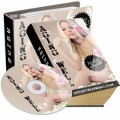 License Type: Private Label Rights
License Type: Private Label Rights  File Size: 163,051 KB
File Size: 163,051 KB File Type: ZIP
File Type: ZIP
 SKU: 52258
SKU: 52258  Shipping: Online Download
Shipping: Online Download
Ebook Sample Content Preview:
As often as you can, step out of the front door while your dog is watching as well as when your dog is not watching. At first, step outside for a few seconds and then come right back in before your dog has a chance to get upset. Do this several times a day varying the amount of time you are outside. Vary what you do as well. Take your coat, keys and briefcase sometimes. At other times just take a walk around the block.
If you normally leave through the garage door, substitute that for the front door. The idea is to remove the association between a specific door and your dog being left alone for a long time. If you have a specific routine before you leave for the day, try varying the routine. You can also go into a room, close the door behind you leaving your dog outside (or vice versa). This accomplishes the same purpose as actually leaving the house if your dog normally gets upset when you put a door between you.
Your dog can become a prisoner of habit. If your dog is used to feeling stressed and anxious whenever it sees you go to the hall closet and take out your coat, force of habit can make your dog continue to do so. Mix up the routine, leave your coat and briefcase and keys in the car in the garage and slip out quietly. Soon your dog will not be able to tell whether you are leaving for 10 seconds or 3 hours.
Try not to make a big show of leaving or coming home. A dog with separation anxiety finds the experience of you leaving very stressful so make sure you are the calm one! When you return, greet your dog calmly and ignore its crazy antics. Just come and go without any fanfare. For some dogs, completely ignoring them for 15 minutes before leaving and after coming home works very well.
Give your dog plenty of exercise, socialization and fun
A dog that is tired and happy is more likely to sleep and not get into trouble. If you can arrange it, take your dog on a long walk right before you leave.
A long walk or jog consists of 1 -2 hours (or more if you can manage it) of active walking, jogging, or running with your dog, not a leisurely 20 minute stroll down the street. If your dog is particularly active and you are not, you may have to consider biking, skating or scooter driving with your dog. As a last resort, you may want to consider a treadmill.
Although a romp at the dog park is an option, many dogs do not get much exercise at parks and a dog with separation anxiety needs to move at a constant, fast pace over a long period of time to ease that anxiety and become tired and satisfied. If you have a retriever, an hour or so of continuous running and retrieving may do the trick.
If you plan on exercising with your dog before you head off to work in the morning, you may need to wake up several hours ahead of your normal schedule. With a large, young dog you will need to add 1 -2 hours of walking or 1 hour of cycling, roller-blading or active retrieving. You will then want a cool down period before feeding and leaving your dog for the day. If you find that a significant increase in exercise decreases the separation anxiety, you can then see if exercise at more convenient times works as well.
Feed your dog before you leave
Some dogs become tenser if they are hungry. A stomach-filling meal with complex carbohydrates like oatmeal can make your dog sleepy and relaxed. The goal is to have a well-exercised, well-fed dog happily engaged in snoozing before you leave.
Leave the radio on
An empty house can be unnerving to some dogs. They can hear every car, pedestrian, delivery person and squirrel that is outside the door. A strange sound can set off whining and barking. A radio can add some white noise to the environment and dampen your dog's reaction to what is going on outside. You can try a classical music station or some mild talk radio. Controversial talk radio, with lots of people arguing and loud commercials can make the situation worse. Try National Public Radio (no commercials, lots of serious chat) which is usually available on a local FM station in your area.
Give your dog something to do
second pet could be the answer. With a second pet in the house, your dog won't feel as abandoned. If this is not possible, try some engaging activities:
Try giving your dog a cardboard box to shred (just make sure your dog is not the type to eat the box!).
Give your dog a treat-filled dog toy such as a puzzle box or rubber chew made just for dogs. Some people use hollow rubber chew toys stuffed with their dog's daily meal, plugged with cream cheese and then frozen solid. This can provide a extended distraction for your dog as it works for its meal!
You will have to try out a few concoctions and toys to see what works. You will want to have one that will occupy your dog for an hour or so or at least long enough for it to forget that you have left them alone.
Give your dog several chew toys that you rotate every few days. These could include rope toys, nylon bones and other safe toys.
Dogs are intelligent creatures and sometimes they get into trouble out of boredom and frustration. Try teaching your dog basic obedience (sit, heel, stay, etc.) and some party tricks (play dead, fetch slippers, etc.) It will give your dog something to think about while you are away.
Try an anti-bark citronella collar
Some dogs bark incessantly when their anxiety levels are high. If this is an issue, try a citronella collar that spurts a cloud of citronella into your dog’s face when they bark.
The collar consists of a battery-operated box that is loaded with citronella. The box is attached to a webbing collar that goes around your dog's neck. The vibrations from your dog's bark will set the collar off. The collar sends a spurt of citronella which surprises your dog into silence. Dogs quickly learn the routine.
- File Size:163,051 KB
- License: Private Label Rights
- Category:Ebooks
- Tags:2014 Ebooks With Audio & Video Private Label Rights








